It doesn't have to be Shark Week to be curious about sharks! They may get a bad rap (lookin' at you, Jaws), but sharks are far less bloodthirsty than the movies suggest.
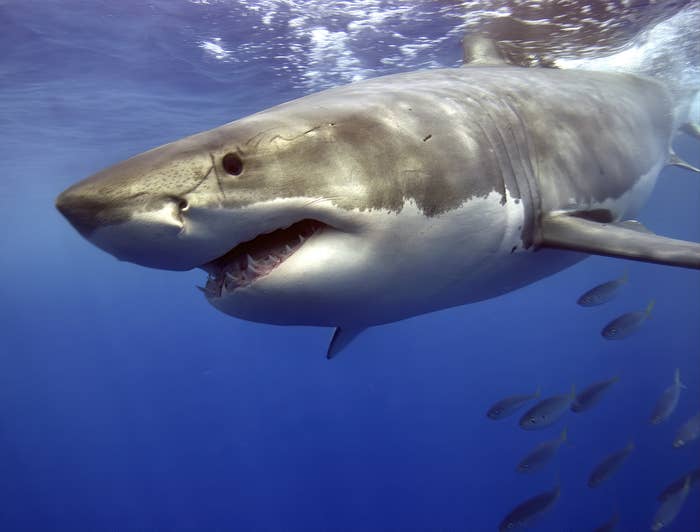
We've collected some of the most fascinating facts about sharks below to help you get a better understanding of some of the ocean's most misunderstood inhabitants.
And for more interesting tidbits about the natural world, check out our favorite animal facts that'll give Planet Earth a run for its money.
1. Female sharks tend to be larger than male sharks.
Was that unexpected? Well, female sharks are a lot bigger than their male counterparts, across multiple species!
2. Out of the known species of shark, only 20 are known to attack humans.
Think about that the next time you're afraid to take a swim in the ocean!
3. A shark's bite can generate 40,000 pounds per square inch of pressure.
You won't want to be caught in the jaws of one of them!
4. Shark teeth are covered in fluoride, so in a way, they kind of have their own built-in toothpaste.
This is also why their teeth are so good at catching prey! Flouride allows their teeth to remain strong and sharp.
5. The great white has more than 300 razor-sharp teeth in its mouth.
The naturally existing fluoride also supports their teeth, positively affecting their usage in catching prey.
6. When gray nurse sharks are born, the first baby shark to develop consumes its siblings as they hatch.
This one's a little wild, but true! Out of all of the babies, only one to two actually hatch.
7. Great white sharks eat around 11 tons of food each year. In comparison, an adult human eats around half a ton.
This makes sense. They're massive!
8. Sharks actually have an excellent memory.
In a study, sharks remembered up to 50 weeks prior! They selected the same shapes that they had chosen in the study when it was first conducted.
9. A blue shark can carry up to 135 pups at once.
The pups can range in length from anywhere between 16-20 inches and usually, litters consist of around 25-50 pups. The gestation period ranges from around 9 months to 12 months.
10. There are 440 different species of sharks.
These species are also sorted into 8 different classifications based on physicality.
11. Great white sharks found off the coast of Seal Island in South Africa will jump 10 feet out of the water to attack unsuspecting seals.
Great white sharks eat seals regularly, and by leaping out of the water, they have a better chance of attack.
12. Hammerhead shark babies actually have soft heads when they're born.
Scientists have reported that this occurs so their head does not damage their mother when they are being birthed.
13. Sharks are colorblind.
Like humans, sharks have rods and cones in their eyes that respond to light, but humans have three types of cones that enable color vision. In contrast, sharks lack multiple cone types, so even those with a high cone count, like the black tip shark and bull shark, can only see in black and white.
14. The epaulette shark can use its fins like legs, to walk, when the tide is too low to swim.
Additionally, it can survive for extended periods with little to no oxygen, allowing it to hunt for prey in isolated low-oxygen tide pools and walk across exposed reef sections. There are nine known species of walking sharks found in Australia, Indonesia, and Papua New Guinea.
15. If a shark embryo develops teeth, it will partake in intrauterine cannibalism, meaning it will eat its siblings inside the womb.
Intrauterine cannibalism was discovered in 1907. The fact that this practice continues is evident because when the pups are born, their stomachs are swollen, which is referred to as a "yolk stomach."
16. The bull shark is able to survive in freshwater.
This ability is unique to bull sharks. They've even been found in the Mississippi and Amazon Rivers. They tend to swim in coastal water, which makes them dangerous to humans.
17. Many sharks found in the depths of the ocean make their own flashlights via bioluminescence.
Using specialized cells found in their skin, sharks can create a soft blue-green light. Before a 2021 study, bioluminescence had been discovered in only about a dozen species of sharks, but now the list is growing.
18. In its lifetime, a shark can have up to 30,000 teeth. They are continuously being replaced and shifted within the mouth.
Sharks can lose dozens of teeth every month. Compared to humans — who grow 20 baby teeth, which are then replaced by 32 adult teeth — the difference is shocking!
19. Whale sharks can live to be 100 years old.
Although whale sharks grow very quickly when they are really young, their growth rate slows down. It takes them nearly one-third of their lives to reach maturity, around age 30.
20. The female shark pregnancy can range from 5 months to 3.5 years, depending on the specific species.
While spiny dogfish sharks can wait 2 years before giving birth, frilled sharks can wait a whopping 3.5 years!
21. Sharks can store food in their stomachs for months.
If something they ate doesn't agree with them, some sharks can evert their stomachs, flipping them inside out to rid the unwanted food. As described by Elasmo Research, "sharks can apparently do this all about as easily as you or I might return an inside-out sock."
22. Sharks have been in existence for over 400 million years.
There's actually fossil evidence that dates back to 450 million years ago — but only scales have been found, not teeth. If the scales did happen to come from an early shark, then those sharks could have been toothless.
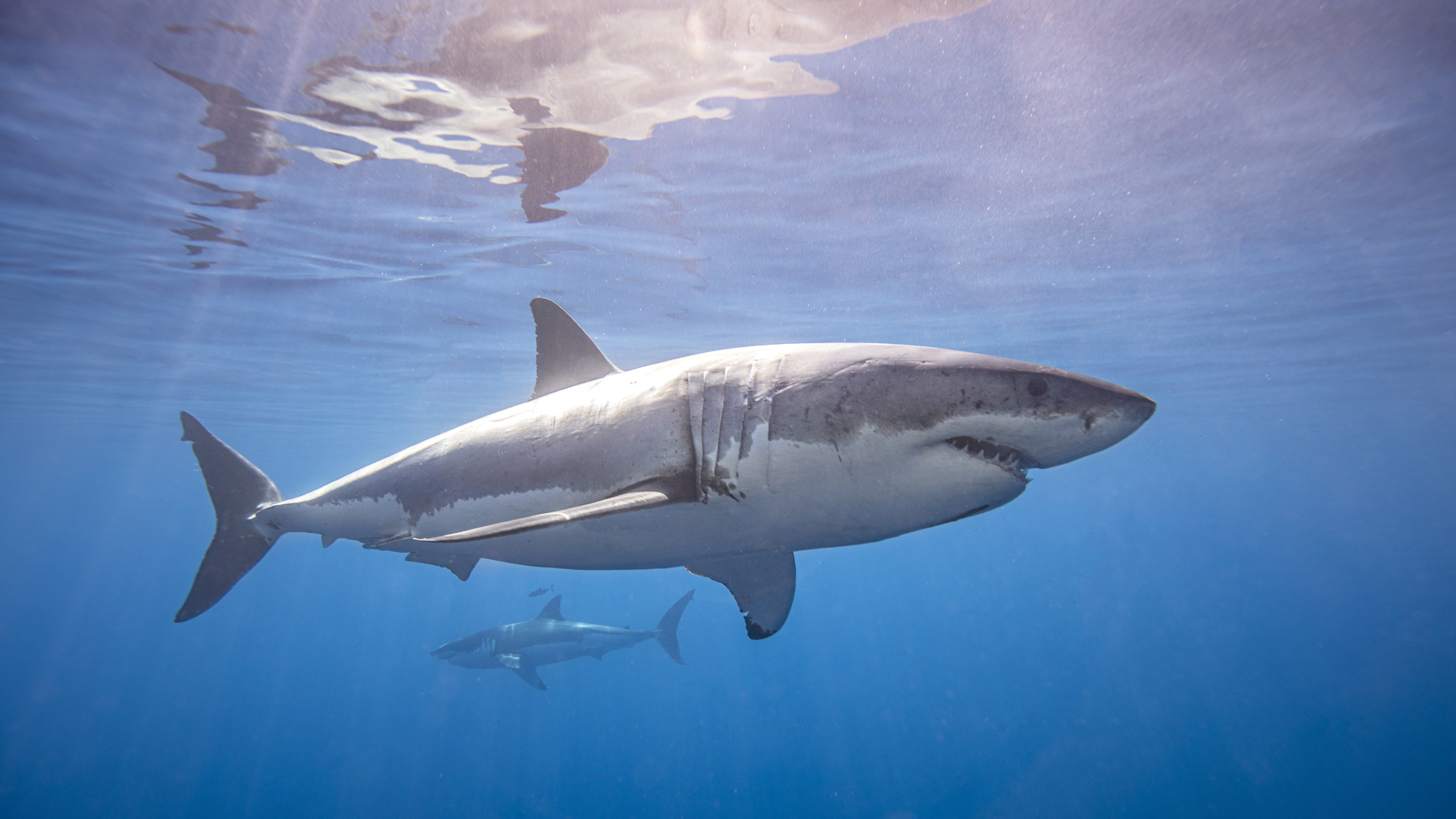
23. Sharks have no bones in their bodies.
Instead, they are made of a rubbery tissue called cartilage. That's made it more difficult for scientists to study ancient sharks, since cartilage typically doesn't preserve as well as bones do — early shark fossil records are mostly based on scales and teeth.
24. The odds of getting attacked and killed by a shark are 1 in 3,748,067.
Despite what Jaws and most of your nightmares will tell you, shark attacks are very rare (phew!). On average, there are 70 to 100 shark attacks per year, and only 5 to 15 of those result in someone dying. By contrast, the odds of being struck by lightning are way higher: 1 in 79,746.
25. The thresher shark has a tail that can grow to about half its body length. The tail serves as a sword.
Thresher sharks can be up to a whopping 19 feet long, meaning their tails can be nearly 10 feet. They actually use their tails to lure prey; as the prey nears the tail, the shark will slap the prey until it's immobilized.
26. Some female sharks retain sperm in their bodies after mating and will use it to reproduce later on.
Four years after the mother shark was last in contact with a male shark, she gave birth to newborn brownbanded bamboo shark at San Francisco's Steinhart Aquarium. According to Scientific American, the previous record for storing sperm was 843 days, held by a chain catshark.
27. Scientists only discovered the megamouth shark in 1976. Since then, there have only been 41 known sightings of the species.
Shark discoveries have skyrocketed over the last 30 years, during which almost 250 sharks species were discovered. That's more than half of the world’s known species!
28. Whale sharks can give birth to several hundred pups in one litter.
Basking sharks don't have as big of a litter, but are pregnant for more than two years! Shark pups are usually born tail first; they don't stick around for very long after being born, though, and swim off to fend for themselves in the vast ocean.
29. Whale sharks are approximately the size of a school bus.
According to National Geographic, whale sharks can range from 18 to 32 feet! If that wasn't hard enough to fathom, they also weigh 20.6 tons, making them the largest fish in the sea.
30. Sharks have a sense called electrosense, which is the ability to sense electric signals. This gives them an advantage when searching for prey.
31. Sharks are hypersensitive to pressure changes in the water. They can notice the slightest changes via specialized cells with tiny hairs in them.
32. Great white sharks can weigh up to 5,000 pounds.
They are the largest predatory fish in the world, with females growing larger than males. Female great whites can grow to be 16 feet long!
33. Tiger sharks, aka the "garbage cans" of the sea, will literally eat anything, which makes them particularly dangerous to humans.
Although seals and sea turtles comprise most of the tiger shark's diet, apparently, one tiger shark was found with a horse's head in its stomach!
34. A shark's skin is tough and thick because it is made of a protein called collagen. The whale shark's skin can be up to 10 centimeters thick!
35. Sharks have a highly evolved sense of hearing, which allows them to hear low-frequency sounds from up to a quarter-mile away.
36. Young sharks spend seven years in a shallow water "nursery" where they grow and learn.
37. Most female sharks have much thicker skin than males because male sharks often bite during mating.
38. The Greenland shark is the slowest-moving fish in history, but reindeer, polar bears, and extremely fast seals have been found in its stomach.
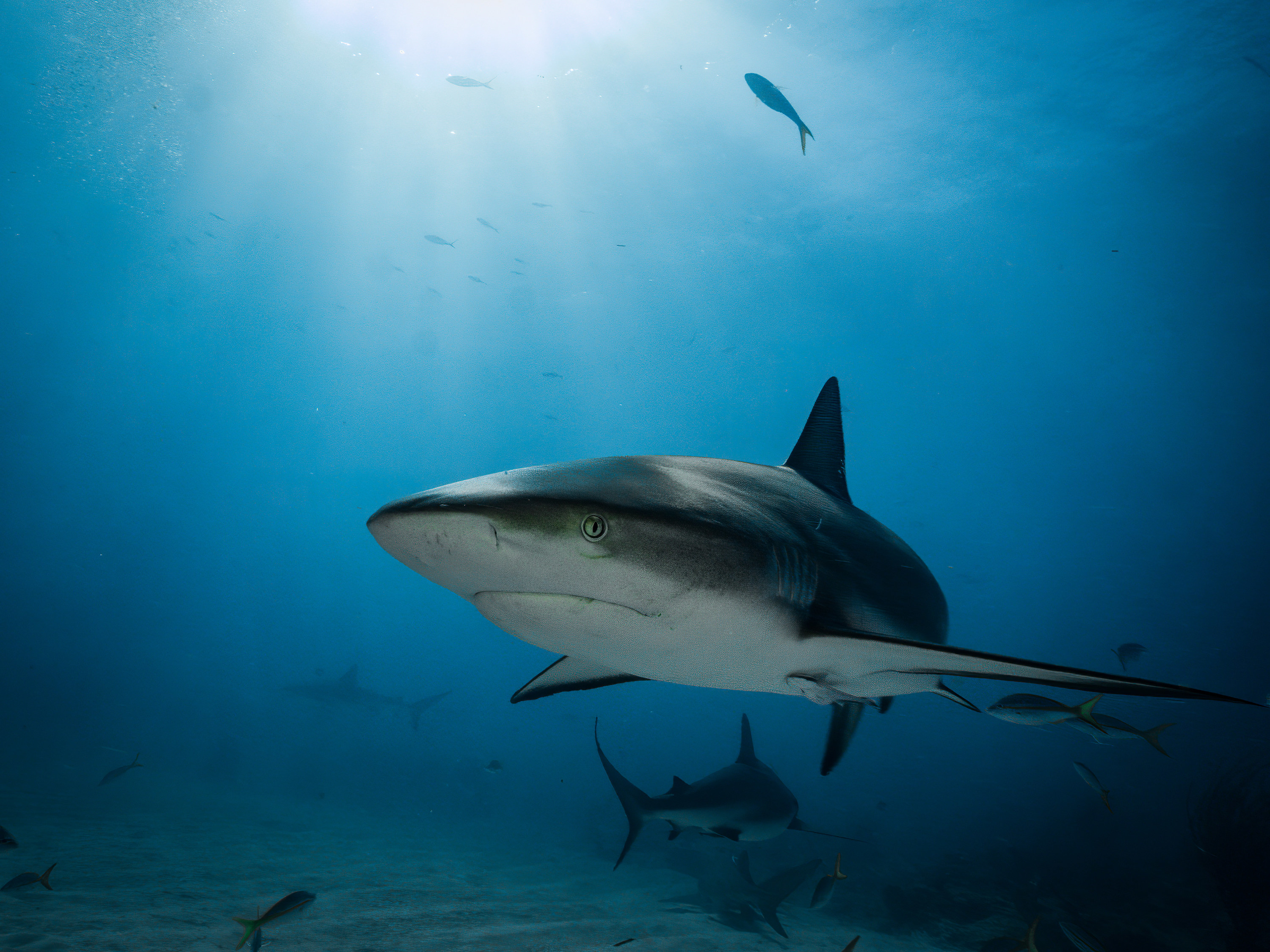
39. Sharks can be introverts or extroverts.
A study was done that proved sharks have individual personalities. More social sharks will band together and communicate with a group, while more introverted sharks will hide away on their own and camouflage.
40. Sharks are one of the slowest species to reproduce.
This is part of the reason they are also endangered. Since sharks
41. A Great White named Lydia swam across the entire Atlantic Ocean, from one side to the other, while being tagged and tracked by scientists.
42. Sharks respond to a special sound that injured fish make, so they can seek out easy prey.
43. Nurse sharks are extremely lazy. They spend most of their time resting on the sea floor and even stack up on top of each other.
44. Sharks don't have scales covering their skin; they have tiny teeth.
Sharks don't have regular scales. Instead they have dermal denticles, which are much more similar to teeth than regular fish scales. The enamel crown, i.e. the toothy part, anchors the dermal denticle to the skin. These tooth-shaped scales allow them to move swiftly through water without collecting barnacles and algae.
45. Great whites can also detect one drop of blood in 25 gallons of water and can sense tiny amounts of blood in the water from three miles away.
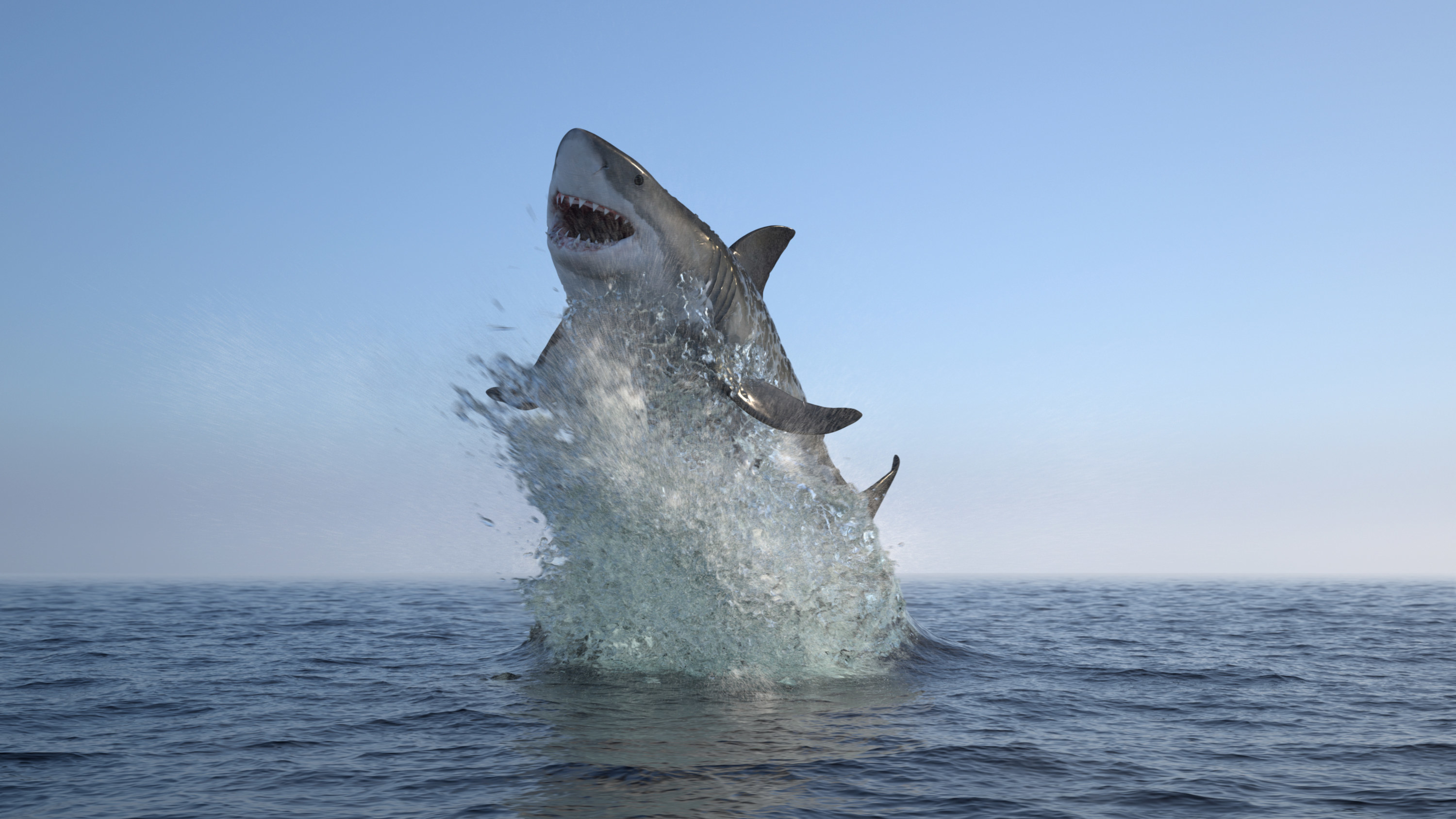
46. At more than 20 feet long, great white sharks are the largest predatory fish on earth.
47. Lantern sharks can glow in the dark.
48. Sharks can live in freshwater by absorbing extra water and then urinating it into the streams around them.
49. Some female sharks can reproduce without any contact from a male, which is known as parthenogenesis.
50. Despite its massive size, the whale shark is a filter feeder, subsisting on tiny, microscopic plankton.
51. The goblin shark lives along outer continental shelves and underwater mountain ranges in areas too deep for human exploration.
52. Extracts from a shark's gall bladder are used in the treatment of both cataracts and acne.
53. Hammerhead sharks can easily adapt to a change in water temperature and can be found from polar regions to the Florida coast.
54. The hammerhead shark's odd-shaped head not only allows for a better visual range than other sharks, but also spreads its sensory organs, allowing it to better detect prey.
55. The basking shark, which is a filter-feeder like the whale shark, can grow up to 33 feet long and can weigh as much as a four-passenger airplane.
56. Blue sharks will overeat until they regurgitate their food, and then will continue to eat.
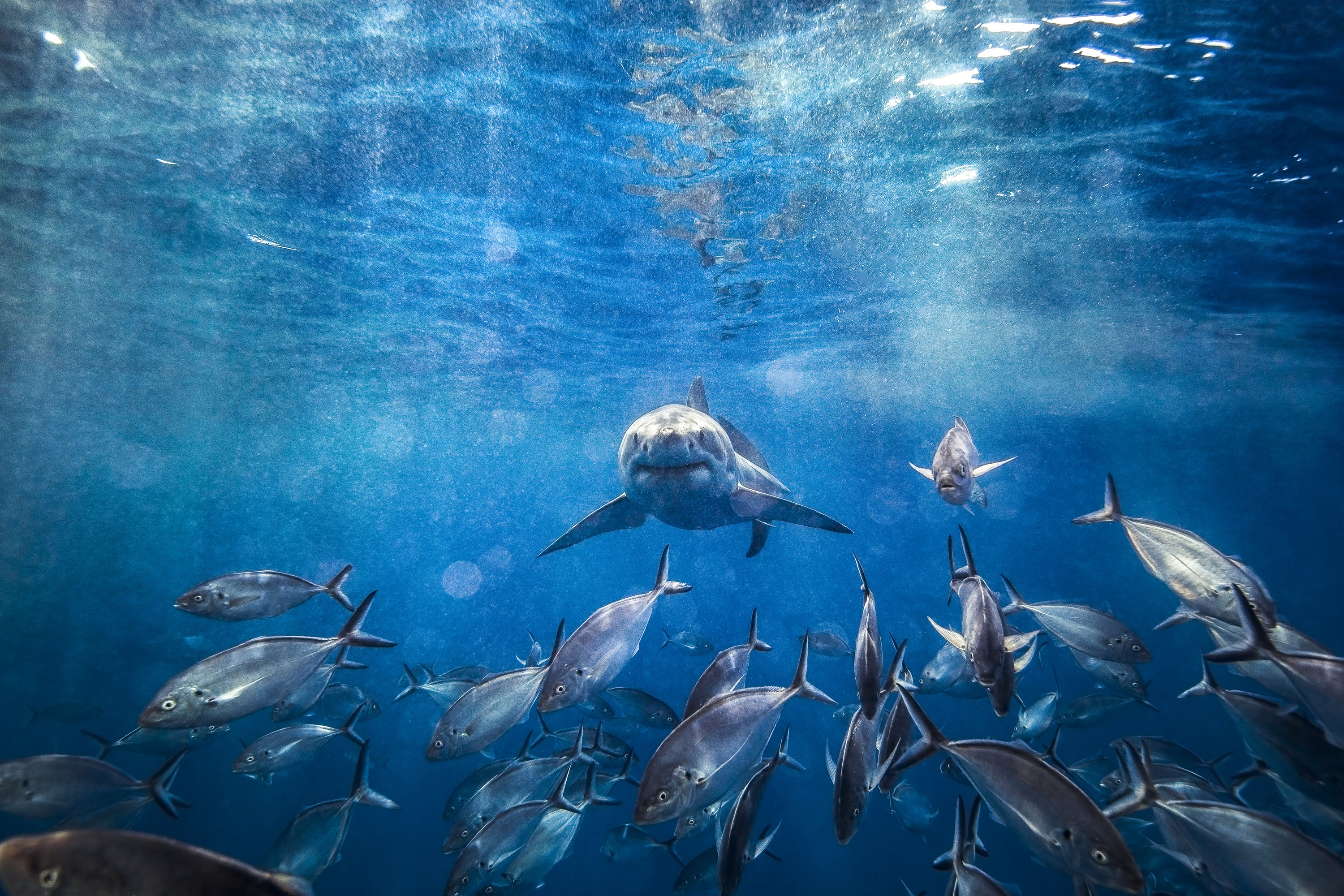
57. In 1978, archaeologists uncovered remnants of shark bodies under the ruins of the Aztec Great Temple.
58. Thresher sharks flail their tails to stun prey in a movement similar to the cracking of a whip.
59. Some female sharks use sperm from several different males to reproduce. Pups are half-siblings even though they are born in the same litter.
60. Despite being so big, the whale shark is a sneaky little thing.
The female whale sharks are especially sneaky. Sightings of whale sharks are 70% male, and no one has ever seen a female give birth.
61. Mako sharks have been clocked swimming at speeds of 43 mph.
62. A great white shark will roll its eyes into the back of its head when attacking to protect its eyes from debris.
63. Sharks are opportunistic eaters, eating whether or not they are hungry.
64. Sharks' sight lines span nearly 360 degrees. They have only two blind spots: one in front of the snout and the other directly behind the head.
65. Angel sharks are also known as sand devils because they dig themselves into the ocean bottom and wait for unsuspecting fish to pass before attacking.
66. You are more likely to die from falling out of bed than because of a shark.
Like, 600 Americans a year die by falling out of bed, and on average less than 6 people are killed by a shark every year worldwide. #NotAllSharks
67. By comparison, humans kill 100 million sharks every year — or 11,000 every hour.

